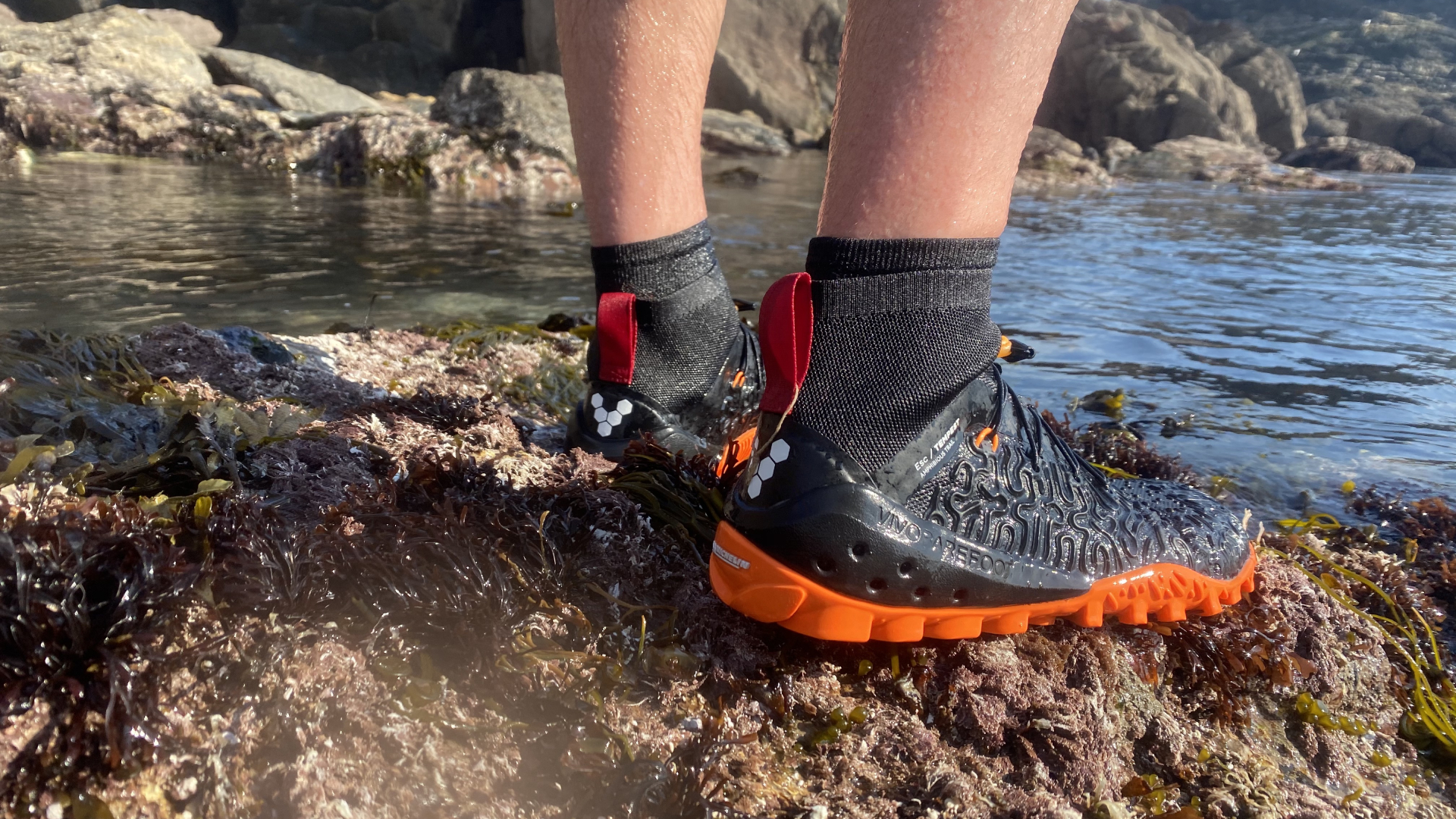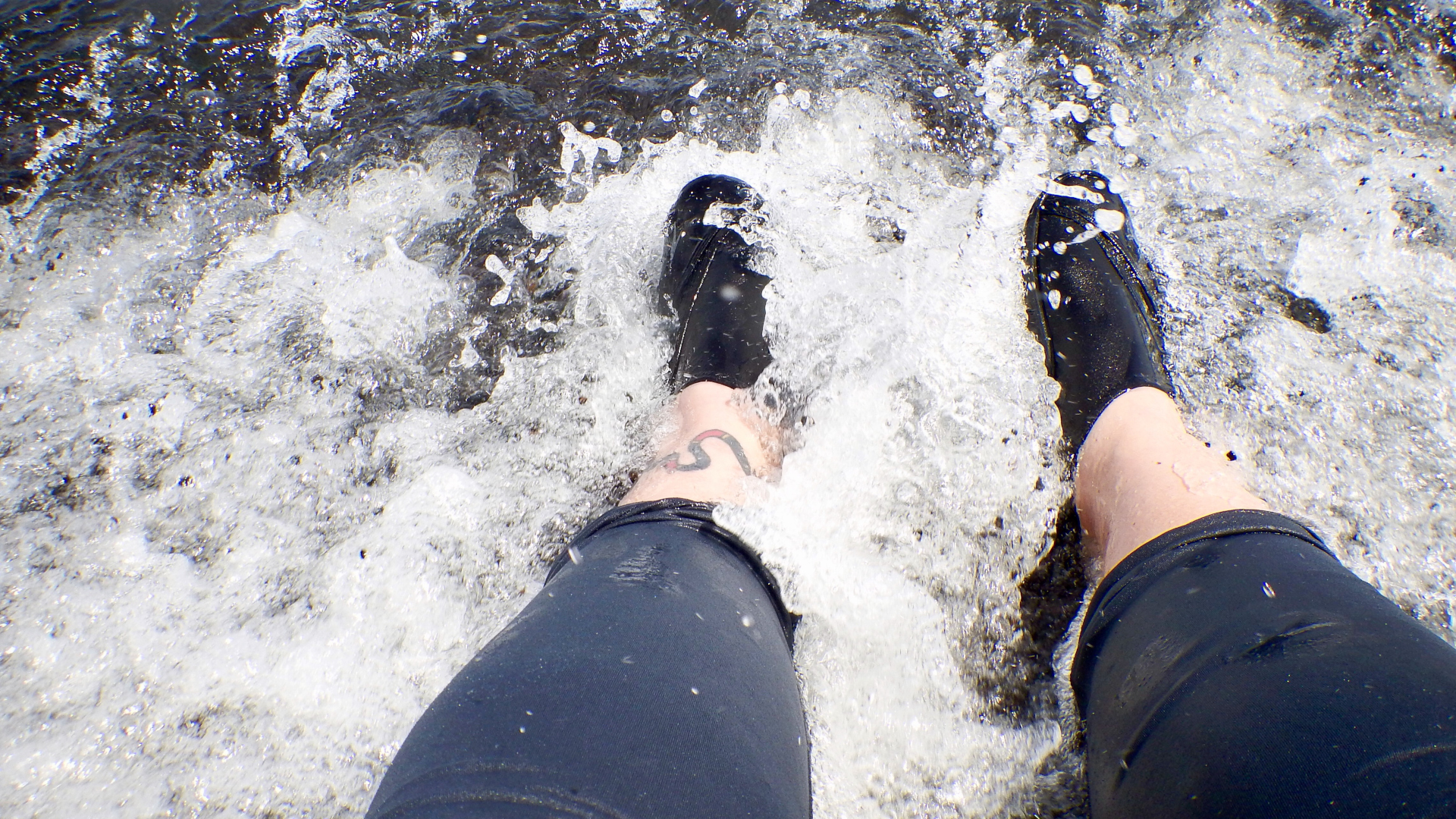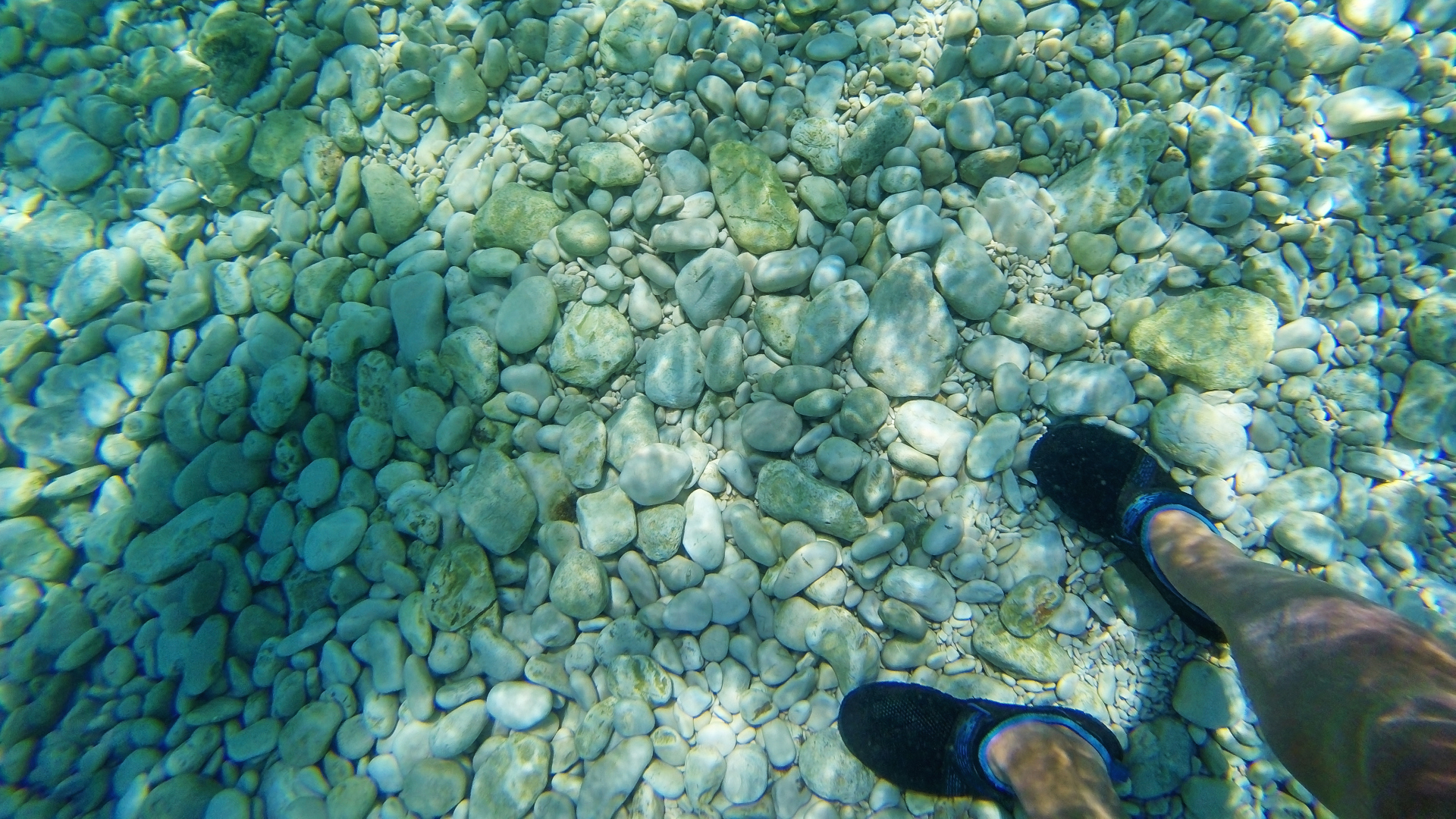Water shoes vs water socks: protect your feet during amphibious adventures
We compare water shoes vs water socks to help you decide on the most suitable option for your aquatic escapades

If aquatic adventures are your thing, you're bound to find yourself faced with the choice between water shoes and water socks. One is the grippy, protective but slightly heavy shoe, while the other is the more streamlined sock that's happiest in the water.
From casual splashing around in waterfalls to serious wild swimming, foot protection is a good idea to shield your toes from icy currents, abrasive rocks, slippery surfaces and stinging jellyfish. But what kind of footwear do you need?
We're here with our expert guide, comparing water shoes vs water socks to help you choose the best option for your saltwater and freshwater adventures. For a quick comparison, see the table below, otherwise read on as we break down the pros and cons of water shoes and water socks.
| Header Cell - Column 0 | Water shoes | Water socks |
|---|---|---|
| Weight | Lightweight, but the rubber sole makes them heavier | Lightweight |
| Insulation | Not insulated | Trap water which is warmed by your body heat to provide insulation |
| Protection | Good protection against sharp shells and stones | Good protection against coral reefs and jellyfish |
| Traction | Decent, or better, traction on slick surfaces | Not much traction |
| Versatility | Walking, paddling, kayaking, paddle boarding, canyoneering | Swimming, surfing, snorkelling |
| Price | Can be budget-friendly or premium pricing | Generally cheaper |
Meet the expert

With the magnificent coast and glorious lochs of Scotland as her watery playground, Julia is spoilt for choice when it comes to amphibious adventures. As someone who's passionate about varied outdoor adventure, she's one of our leading gear experts.
Today's best deals
What’s the difference between water shoes and water socks?
- Water shoes are slips with rubber outsoles and mesh or neoprene uppers
- Water socks are like regular socks but are waterproof and often made from neoprene

Let’s start at the beginning – what are water shoes and socks anyway? The best water shoes are slip-on shoes that look a lot like your gym plimsolls from elementary school. They feature a rubber sole and a tight, stretchy mesh or neoprene upper. They have a narrow cuff that encircles your ankle snugly, right where it meets your foot.
Water socks, on the other hand, look pretty much like a regular sock except they're made from the same materials as wetsuits – typically neoprene – and come in different lengths. Water socks have historically been used by snorkelers and surfers for protection and insulation in the water, whereas water shoes tend to be favored for hanging out on a rocky shore or moving between land and water, but increasingly people are using them for wild swimming and kayaking too. So, are the two interchangeable? Let’s compare them side by side to see which is best for your aquatic adventures.
Weight
- Water shoes are much heavier due to their rubber soles

Because water shoes have a rubber sole and water socks do not, your water shoes are going to be the heavier of the two when you’re on land, which can make them a little more burdensome for swimming. That said, remember we explained that water shoes have that mesh upper? That means water moves in and out of them, whereas water socks will trap water next to your foot, which then makes them a little heavier when you’re actually in the water.
Insulation
- Water socks trap a layer of water that provides insulation, just like a wetsuit
- Neoprene water shoes provide the same kind of insulation
- Water shoes with mesh uppers aren’t as insulating
What if you’re primarily looking for something to keep your feet warm in icy water? Well, that water that your water socks trap gets warmed by your body heat, and insulates your feet the same way your weight suit does the rest of your body. While you’ll probably feel a little happier wearing mesh water shoes rather than having bare feet in cold water, they don’t insulate per se. However, neoprene water shoes insulate in the same way as a wetsuit does.
All the latest inspiration, tips and guides to help you plan your next Advnture!
Protection
- The rubber outsole on water shoes is highly protective
- Water socks don’t provide as much protection

Really, the main reason to use water shoes or socks at all is for protection against sharp shells and rocks, broken glass and rough coral. Because water shoes have a sole, they’re great for walking around on such surfaces. Water socks also provide some protection, but not as much, and even if they prevent anything sharp from actually piercing your foot, you still might be pretty uncomfortable walking around on rocky beaches in them. That said, if you’re diving and your main concern is coral reefs and jellyfish stings, water socks provide ample protection.
Water shoes also have more protection in their uppers than both water socks and their other rival, water sandals.
Traction
- Grippy rubber in the outsole gives water shoes great traction
- Water socks don’t provide much traction
There’s another type of surface that you need protection from, and that’s a smooth, slippery surface, which you’ll often encounter when swimming in rivers and lakes. This where water shoes definitely take the lead. Though the amount of traction depends on the shoes themselves, the rubber sole is meant to help keep you from slipping, and water socks don’t provide much support in this department.
Versatility
- Water shoes are great for easy walks, kayaking, paddle boarding, fishing, crossing rivers and canyoneering
- Water shoes are fine for a paddle but not great for swimming long distances
- Water socks are ideal for diving, snorkelling and surfing but not for dry land

So what can the two actually be used for? Well, water shoes are great for walking around on the beach, water sports like kayaking and paddle boarding, fishing and crossing rivers. Some people are happy wearing them to walk around on dry land, even hiking in water shoes, and they can be useful for canyoneering too. Though they’re not amazing for swimming long distances in, you can definitely paddle around in them quite happily.
Water socks, on the other hand, are ideal for swimming and also great for diving, snorkelling and surfing. They’re not much use for dry land, however.
Price
- Water socks are generally much cheaper than water shoes
When it comes down to price, you can definitely pick up a pair of water socks for under $20 / £20, whereas you could fork out twice that or more on water shoes, although they do run the gamut from budget-friendly to premium pricing. If you’re looking for something where either version will do, you’ll probably save money with a water sock.
The verdict
By now, you probably have a pretty good idea of what you need. If you’re mostly going to be swimming or spending long periods in the water and are looking for some insulating power and light protection, you can save money with a pair of water socks. If you want something that provides good protection when you’re walking around but also works in the water, you need a water shoe and it’s time to check out our list of the best water shoes out there.
Finally, if you need lots of protection from sharp objects and you want to be able to stay in cold water for a long time, you actually can wear water socks together with water shoes, so don’t feel that you have to limit yourself to just one here.
Julia Clarke is a staff writer for Advnture.com and the author of the book Restorative Yoga for Beginners. She loves to explore mountains on foot, bike, skis and belay and then recover on the the yoga mat. Julia graduated with a degree in journalism in 2004 and spent eight years working as a radio presenter in Kansas City, Vermont, Boston and New York City before discovering the joys of the Rocky Mountains. She then detoured west to Colorado and enjoyed 11 years teaching yoga in Vail before returning to her hometown of Glasgow, Scotland in 2020 to focus on family and writing.

